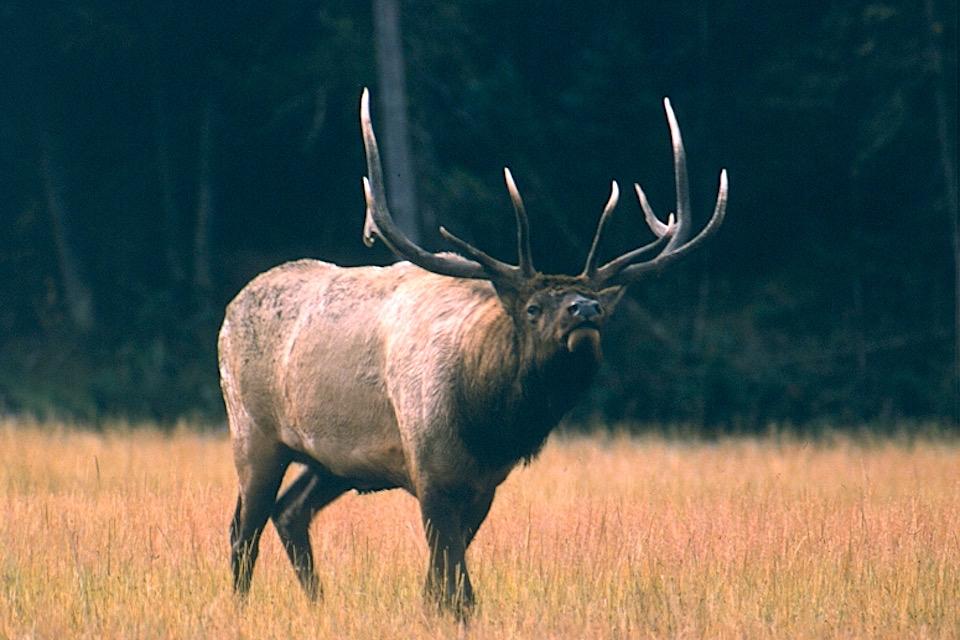
Elk on private lands within Grand Teton National Park can be hunted, the 10th U.S. Circuit Court of Appeals has agreed/NPS file
Wolves, grizzly bears, and other wildlife can be hunted on private inholdings in Grand Teton National Park, the 10th U.S. Circuit Court of Appeals has ruled.
The ruling stemmed from a National Park Service decision in 2014 that its wildlife regulations did not apply to 2,300 acres of privately or state-owned land inside the park that hugs Wyoming's western border. Among the organizations challenging that interpretation were the National Parks Conservation Association and the Greater Yellowstone Coalition, which maintained in a lawsuit that the National Park Service's authority inside national parks extended to private lands within those borders.
“We are committed to ensuring Grand Teton National Park’s remarkable wildlife is managed consistently throughout the park and with the highest level of protection possible, which park visitors expect,” Sharon Mader, NPCA's Grand Teton program manager, said in 2016 when the lawsuit was filed. “For more than 65 years, the National Park Service rightfully and lawfully exercised authority to protect all park wildlife. It should continue to do so moving forward.”
The Park Service changed its position regarding who had authority to manage wildlife on inholdings within Grand Teton after a wolf was killed on private land inside the park. In November 2014 the Park Service agreed with the Wyoming Game and Fish Department that state laws, not the Park Service's, applied to private inholdings in the park.
For many years we assumed that 36 CFR [§] 2.2 applied on private inholdings within Grand Teton and prohibited the taking of wildlife on those inholdings. While NPS continues its interest in ensuring that wildlife management on private inholdings does not negatively impact park resources, we have concluded that 36 CFR [§] 2.2 does not apply to private inholdings within Grand Teton.
In upholding a lower court's ruling that the Park Service lacked jurisdiction over private and state lands inside Grand Teton, the 10th Circuit last Wednesday agreed with the Park Service's 2014 November determination. Key in the pertinent section of the Federal Code regarding hunting in national parks, 36 C.F.R. § 2.2, is that the Park Service holds jurisdiction only over lands "that are under the legislative jurisdiction of the United States.”
When Grand Teton was expanded in size in 1950, Wyoming's Legislature never ceded its jurisdiction over the private and state inholdings to the federal government, the court pointed out, and so the Park Service never held jurisdiction over those lands within Grand Teton.
“I am most gratified that the 10th Circuit Court of Appeals recognized that the State of Wyoming has not ceded its authority to the National Park Service regarding inholdings within Grand Teton National Park,” said Wyoming Governor Mark Gordon. “This is a critical underpinning for wildlife management in this part of Wyoming and gives due recognition to joint management and the strong relationship we have with GTNP, which has always been important to Wyoming.”



Comments
This certainly could happen in the 9th Circus.
There seem to be a lot of folks taking issue with the National Park Service over this issue. While I'm always suspicious of anything government does or wants to do, in point of fact all three government entities involved did the right thing on their own in this case. The court's ruling addressed a lawsuit brought not by the National Park Service but by a non-government, third-party environmental group, the National Parks Conservation Association. The NPCA sued the federal government, claiming that the National Park Service erred in 2014 when it voluntarily adopted the position that these private lands were not subject to their jurisdiction. The lower court and the 10th circuit correctly ruled that the National Park Service was, in fact, correct. In other words, the National Park Service and both courts got it right for once.
PUt a fence around it and post a guard at the gates to keep animals from entering the inholdings. In a few years they'll sell out or have to cart in their own animals.
Jack's point is exactly spot on and what people should focus on with this decision. It was NPCA and others that brought this court action The NPS was being responsible and responsive. Inholdings create a lot of challenges and issues and it is the on the ground staff that have to manage these issues and nurture the relationships. Not always easy but it can be done and takes years/decades of trust. When groups such as NPCA jump in it sometimes throws off the balance of those relationships. I am not saying everything NPCA does is bad - they do some great things. But, when litigation gets thrown down it raises the stakes significantly.